Have you ever been camping in your RV and just wished you had more space to enjoy the outdoors? If so, you may want to consider the advantages of an RV awning. Not only do RV awnings provide extra shade and shelter against the elements, but they also extend far enough for you to customize your outdoor living area and create a comfortable atmosphere for yourself and any guests visiting. With this comprehensive guide be ready to take a closer look at how far RV awnings extend to understand all the possibilities that come with them!
Table of Contents
What are RV Awnings?
RV awnings are a great way to add extra living space to your recreational vehicle (RV). They provide protection from the sun and rain while allowing for comfortable outdoor living. RV awnings come in a variety of styles including retractable, slide-out, and manually operated models. The size of the awning you need will depend on the size of your RV and the type of outdoor living you plan to do.
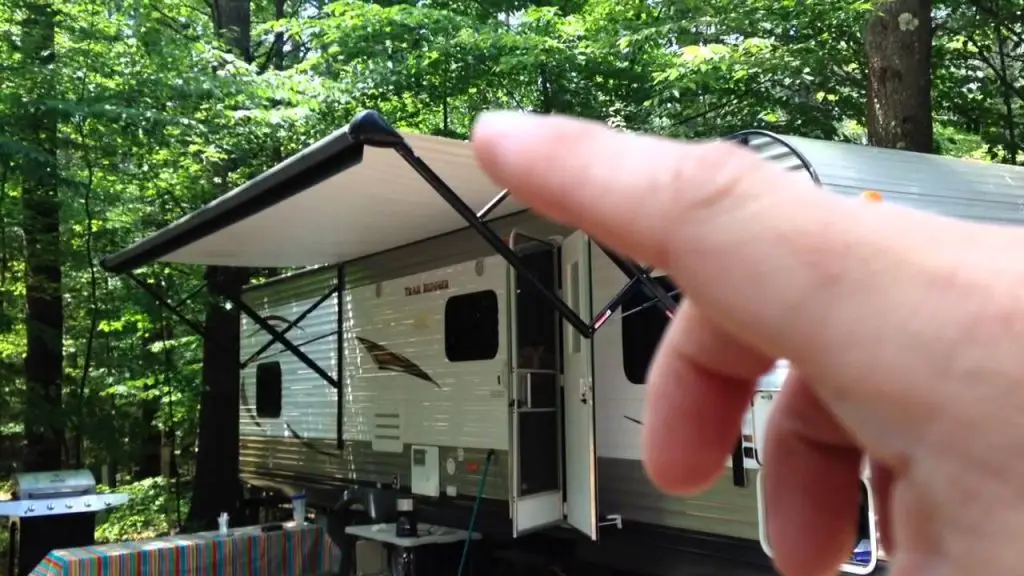
RV awnings can be made from a variety of materials including vinyl, fabric, or metal. Vinyl is the most common material used for RV awnings as it is lightweight and easy to clean. Fabric awnings are also popular because they provide good insulation and protection from the sun’s rays. Metal awnings are more durable, but require more maintenance.
No matter what type of RV awning you choose, make sure to get one that is designed for your specific RV and the type of weather conditions you will be exposed to while camping or traveling. The right awning can make all the difference in providing a comfortable outdoor living space and protecting your RV from the elements. It’s also a good idea to invest in quality awning maintenance products such as cleaning solutions, protective coatings, and repair kits so that your awning stays in top condition for years to come. With proper care and maintenance, an RV awning can last for many camping seasons [1].
How Far Do RV Awnings Extend?
Portable Awnings
Portable RV awnings are typically 8 to 10 feet in length, and can be easily extended or retracted when needed. Depending on the make and model of the awning, some may even extend up to 12 feet. They usually come with adjustable poles that are designed to hold the fabric securely into place. Portable RV awnings can provide shade during sunny days, and they can easily be stored away when not in use.
Retractable Awnings
Retractable RV awnings are usually made out of aluminum or vinyl and come with varying levels of extensions. Depending on the make and model, some retractable RV awnings may extend up to 18 feet or more. These awnings are typically more expensive than portable RV awnings, but they provide more coverage and can be permanently installed on the side of the RV.
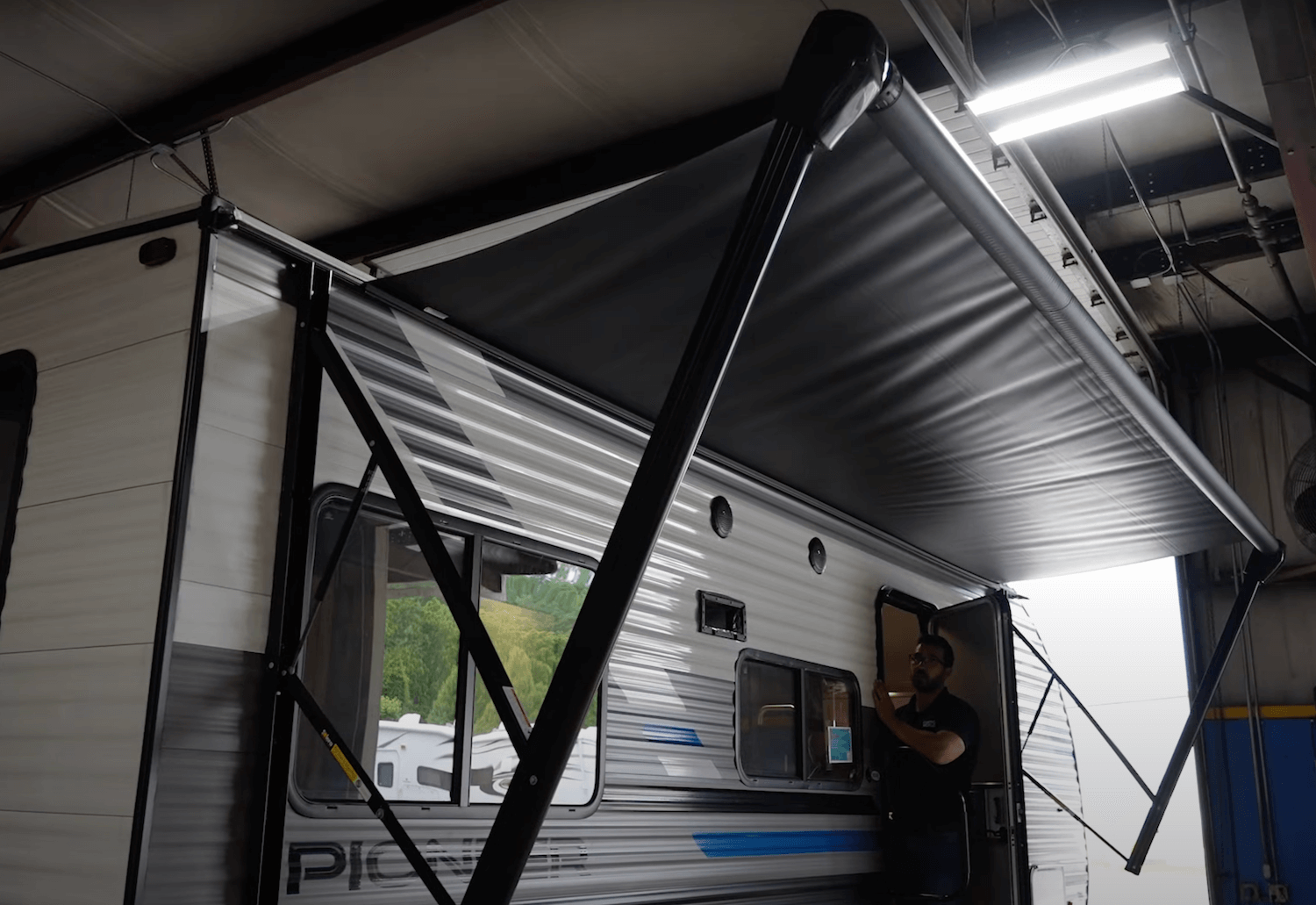
Electric Awnings
Electric RV awnings are becoming increasingly popular, as they allow for easy operation with just the push of a button. These awnings may range from 8 to 20 feet in length, and they are designed to be completely automated. They usually come with a remote control for easy operation, and some may even include sensors that automatically retract the awning when it senses strong wind or rain. Electric RV awnings can provide both comfort and convenience for RV owners [2].
Awning Considerations
When choosing an RV awning, it is important to consider the size of your RV and the amount of coverage you need. Portable and retractable awnings can be great options for smaller RVs, while electric awnings may be better suited for larger ones. Additionally, keep in mind that fabric awnings tend to require more maintenance than aluminum or vinyl ones. Finally, take into account your budget and the features you need before purchasing an awning. Doing so can help ensure that you get the right awning for your RV.
In addition to the size and type of awning, it is also important to consider accessorizing your awning with accessories such as accent lighting, privacy walls, gazebos or screens. These can add additional comfort and convenience for those looking to extend their living space outdoors. Finally, make sure that the awning you choose is compatible with your RV’s roof type and size before making a purchase. Taking the time to consider all of these factors can help ensure that you get the perfect awning for your RV.
What Are RV Awnings Made Of?
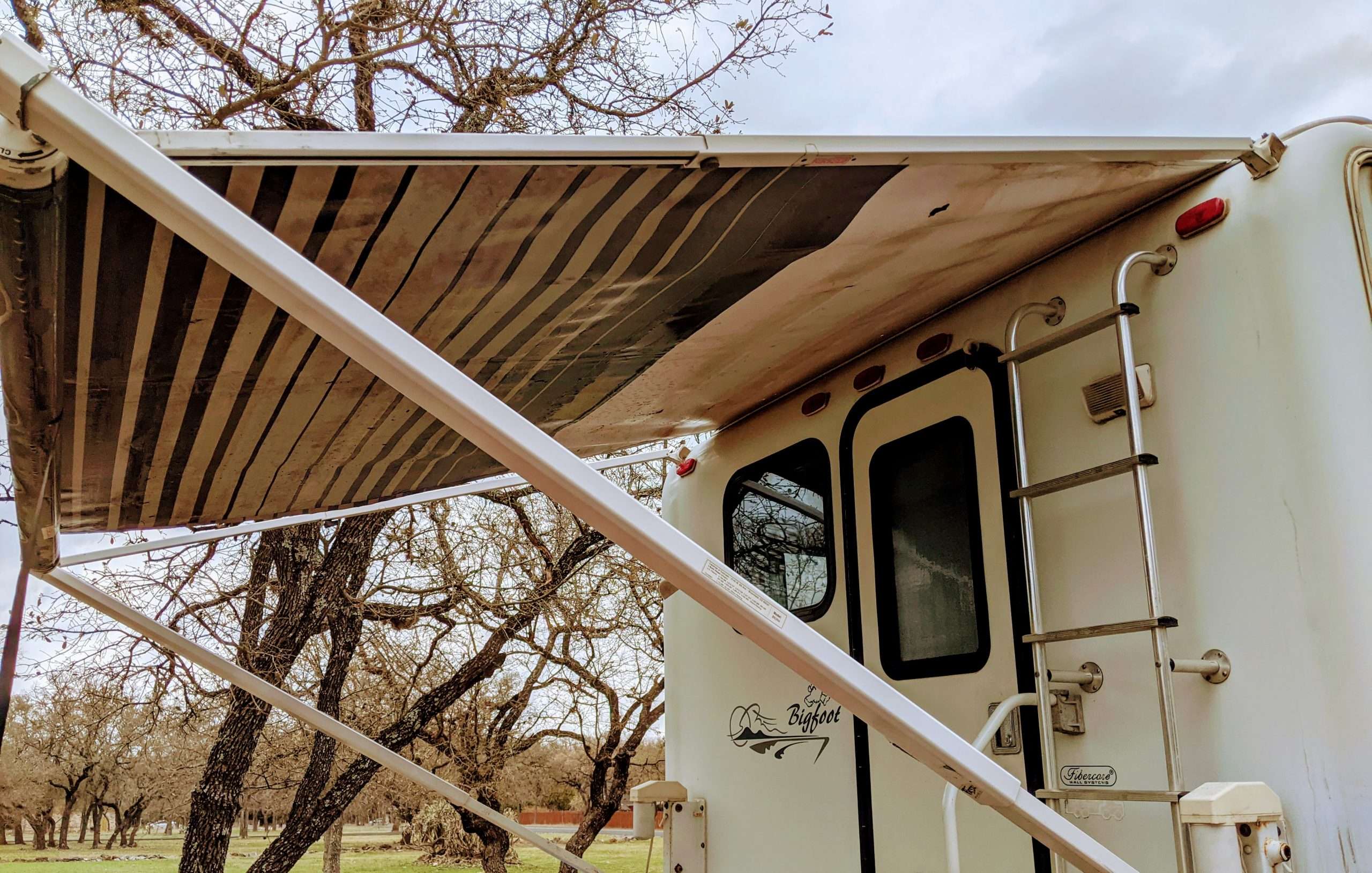
Acrylic
Acrylic awnings are the most popular and affordable type of RV awnings. They come in a wide range of colors and patterns, so you can easily find one to match your aesthetic. Acrylic fabric is UV-resistant and waterproof, making it a great choice for those who want an attractive yet durable awning. Additionally, acrylic is lightweight and easy to maintain, so it’s perfect for frequent travelers.
Vinyl
Vinyl awnings are also popular among RV owners. They offer an economical solution that is both durable and long-lasting, while still being lightweight and easy to care for. Vinyl awnings come in many different colors and designs, so you should be able to find one that is perfect for your RV. Additionally, vinyl awnings are great at blocking out the sun’s rays, helping to keep you cool and comfortable in the summer months.
Metal
Metal awnings are becoming increasingly popular among RV owners who want an extra layer of protection from the elements. Metal awnings offer superior durability and weather resistance, making them a great choice for areas with harsher climates. Additionally, metal awnings are available in a variety of colors and designs, so you can find one that fits your style. However, they may be more expensive than other types of RV awnings.
Fabric
Fabric awnings offer an attractive option that is perfect for those who want a softer look. Fabric awnings are available in many different colors and patterns, so you can easily find one to match your style. They also provide superior protection from the sun’s rays, as well as wind and rain. However, fabric awnings may not be as durable or weather-resistant as metal or vinyl ones. Additionally, they may require more maintenance to keep them looking their best [3].
Where Are RV Awnings Typically Located?
RV awnings are typically located on the side of the RV, usually near the door or windows. They can also be found along the sides and back of larger RVs, providing greater sun protection for outdoor activities like barbecuing. In some cases, you may even find an awning at the front of your RV that wraps around to provide shade for the front windows.

Depending on the size of your RV, you may also need to install additional awnings to provide more coverage. For example, some RVs come with an optional pop-up canopy that attaches to the side of the vehicle and extends outwards for additional protection from sun and rain. You can also purchase awning extensions that connect to the existing RV awning and provide extra coverage.
In addition, many RV owners choose to install additional aftermarket awnings, such as retractable models. These can be installed over windows, doors or even along the sides of your RV for added protection from wind and rain when camping in harsher conditions. Retractable awnings come in a variety of sizes and materials, so you can choose one that best meets your needs.
Factors That Affect How Far You Can Extend Your RV Awning
Wind
Strong winds can damage awnings, so it’s important to consider the wind potential when using an RV awning. Heavy rains and storms associated with high winds can cause the fabric to tear or rip from the frame as well. Always make sure that your awning is properly secured in order to avoid any costly damage due to strong gusts of wind or heavy rain.
Weight
The weight capacity of your awning is an important factor to consider when extending it. Overloading the awning with too much weight can cause it to collapse, putting you and your RV at risk for serious damage. Always make sure that your RV awning can support the amount of weight you are adding before extending it.
Ground Conditions
The ground conditions of where you are extending your awning should also be taken into consideration. Soft or loose soil can give way under the weight of the extended RV awning, causing it to collapse and potentially damage the RV as well. Make sure that you secure your awning on firm, level ground before extending it.
Rain Gutters
It is essential to check the rain gutter of your RV before extending the awning. Rain gutters that are clogged or damaged can cause water to build up and damage both the frame and fabric of the awning. Clean out any debris from your rain gutters prior to extending your awning in order to ensure its longevity and prevent unnecessary damage.
Driving Height Restrictions
Certain roads may have height restrictions that could cause your RV awning to be damaged. Always check the driving height restrictions of any road you will be traveling on prior to extending your awning, as failure to do so can result in serious damage and costly repairs.
Size of the RV
The size of your RV also plays a role in how far you can extend the awning. Size restrictions may limit the amount of extension that is possible, so make sure to check with your manufacturer prior to extending your awning beyond the suggested limits. It’s also important to check whether or not the frame and fabric of the awning are suited for the size of your RV. If not, you may need to purchase a different model that will suit the length and width of your RV more appropriately.
How to Maintain an RV Awning
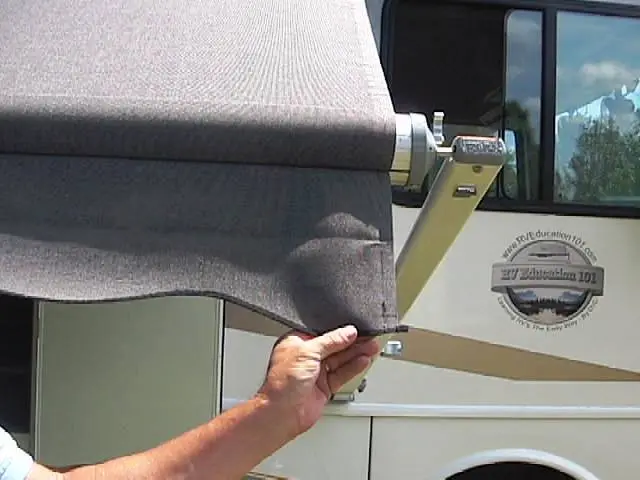
An RV awning is an important part of keeping your recreational vehicle (RV) comfortable and safe. A good quality awning will provide shade, shelter you from the elements, and add to the overall aesthetic of your RV. However, they require regular maintenance to stay in good condition. Here are some tips for maintaining your RV awning.
Clean Regularly
It is important to regularly clean your RV awning, as dirt and debris can accumulate over time. Use a soft brush or a sponge to scrub the surface of the material gently. You may also want to invest in an upholstery cleaning kit specifically designed for outdoor fabrics, which will help preserve the life of your awning.
Check for Damage
Before setting up your RV, check the awning fabric and frame for any signs of damage. Look out for rips, tears, or discoloration in the material, as well as loose screws or bent components in the frame. If you spot anything that looks suspicious, it is best to repair it immediately before any further damage occurs.
Use Awning Covers
When not in use, cover your awning with a protective cover to prevent dirt and debris from building up on the surface of the material. This will also help protect it from UV radiation that can cause fading or wear-and-tear over time. Some covers even come with straps and grommets to securely attach them to the awning frame so they don’t fly away in strong winds.
Secure When Not In Use
When you are not using your awning, make sure it is secured tightly in place and safely tucked away when driving. This will prevent it from sustaining any damage from high winds or sudden gusts. It is also a good idea to store your awning away from direct sunlight, as UV rays can cause the material to wear down over time.
Inspect and Repair
If you notice any signs of damage on your RV awning, it is important to get it inspected and repaired by a professional as soon as possible. If left unchecked, even minor damage can quickly worsen and become more expensive to fix. Additionally, some RV parks offer free awning inspections for peace of mind while traveling.
FAQ
How far do awnings extend?
Awnings typically extend 3 to 5 feet from the wall on which they are mounted. The exact distance will depend on the size of the awning, as well as the type of bracket used to mount it. Some awnings can be extended further with telescopic arms and other accessories, allowing them to cover more area if needed.
What are the benefits of using an awning?
Using an awning can provide many benefits, including protection from the elements, improved energy efficiency, increased privacy, and aesthetic enhancement. By providing shade from the sun, an awning can help keep temperatures more comfortable in hot weather and reduce air conditioning costs. Additionally, they also protect from rain and snow, reducing the amount of water that can enter through windows and doors. The right awning can also provide additional privacy from passersby as well as add to the overall look of a home or business.
What materials are awnings made from?
Awnings can be made from various materials such as aluminum, steel, canvas, vinyl, and acrylic. Each material has its own benefits and drawbacks, so it is important to consider the intended use when choosing a suitable material. For example, canvas is highly durable but can also be heavy and difficult to install, whereas aluminum is lightweight and easy to install but may not hold up as well in extreme weather conditions. It’s also important to note that some materials can be treated to be resistant to UV rays, mildew, and water damage.
Can I install an awning myself?
In most cases, installing an awning can be done as a DIY project. However, for larger or more complex projects, professional installation is recommended. It’s important to make sure you have all the necessary tools and supplies, as well as a good understanding of the installation process. Additionally, it’s also important to follow all local building codes and regulations when installing an awning.
Do I need permission to install an awning?
In most cases, you will not need special permission to install an awning. However, it’s important to check with your local authority, as there may be certain restrictions in place. For example, some areas have height restrictions that must be followed when installing an awning. Additionally, you may also need to get a building permit if the installation requires structural changes to the property.
Useful Video: How to Extend and Retract the Awning on Your RV
Conclusion Paragraph
Extending RV Awnings can be a great way to improve the outdoor living experience. They provide shade and protection from the elements, while also making spaces look more attractive. With proper planning and installation, an RV Awning can be an excellent addition to any camping or recreational vehicle. Not only do they increase comfort and convenience for campers and travelers alike, but they also help preserve the life of your RV by protecting it from the sun and other elements that can cause damage over time.
References:
- https://outdoormiles.com/types-of-rv-awnings/
- https://www.jeffsetter.com/how-far-do-rv-awnings-extend/#
- https://koa.com/blog/types-of-rv-awnings-how-to-choose-the-best-awning-for-your-rv/#

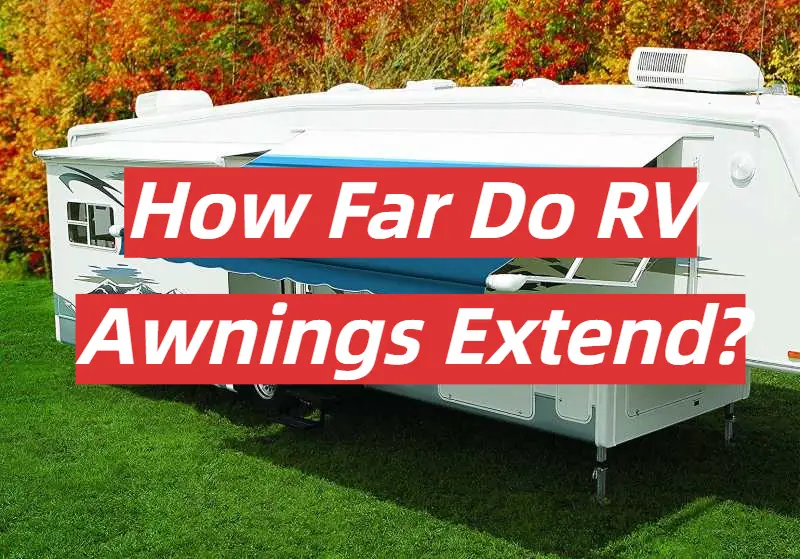
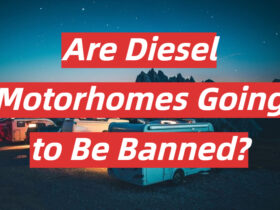
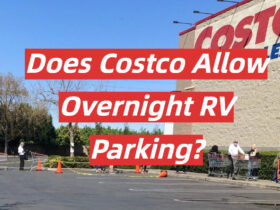
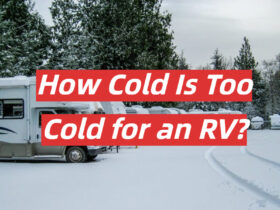
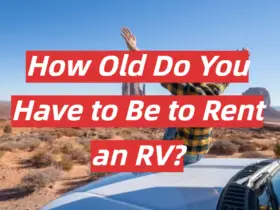
Leave a Reply